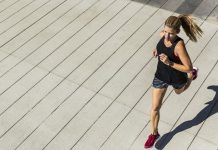You always need the right shoe for the proper purpose; just as you have official and casual wear, you should have a different shoe for running or going to the gym. Enjoy your camping, hiking, or workout with the correct shoe for optimum performance and while avoiding injury.
Find yourself the best shoe to aid you in morning runs or a shoe that will allow you an all-around exercise for healthy fitness.

What are training shoes and running shoes used for?
Training shoes
Designed to accommodate all manner of movement, training shoes aid stopping, jumping, breaking, and sudden change in direction. With the many movement provisions, a shoe like this can get you through all your gym needs giving maximum comfort to your leg away from injuries.
Training shoes have a little or no heel to support pivoting yourself. They are made comfortably flexible on the upper and middle parts for efficient movements in any direction. These shoes can help you with short distances on the treadmill, but for long stretches of more than 5km, you should get running shoes to accommodate that. Some of the uses of this type of shoe include:
- Lifting weights – You need extra support when doing squats holding a weight; therefore, this additional support comes from the heel to help you stand up.
- Highly intense workouts training – particularly in boot camp training, vigorous movements can be cushioned by the shoe’s versatility.
- Strength training – lifting very cumbersome weights most times requires extra support from the front of the leg; a training shoe will provide just that.
- Agility training – the tread system of the shoe enables you to move in swiftness, sure of your stability and responsiveness.
Running shoes
The name suggests the use of these shoes. For the most part, this shoe is designed to give you comfort and necessary support as you move stride by stride, whether it is just a short distance or a whole marathon. The repetitive hammering of the lower part of the leg on the track or road can cause you harm, particularly in long distances. A heel for absorbing these shocks is used to keep you all comfortable for your morning run or marathon.
Coupled with traction and cushioning, you can go longer on these shoes running because they are designed to help forward movement and stability to keep you on track. Additional aspects are airspaces that keep your foot aerated and reflectability in darkness to ensure motorists spot you. Still, a pair of blue running trainers can do the trick too.
Main differences between training and running shoes
Heel size – a training shoe is characterized by its low heel to help pivot during a workout. In contrast, a running shoe is equipped with a heel from extra cushioning and support for the front movement.
Sole tractability – a running shoe focuses on moving forward; thereby, its sole’s flexibility lies on the toe and heels. You can move in any direction comfortably for a training shoe as it is designed to, particularly for side to side motion, say, in the gym or camp boot.
Potential risks for using the wrong shoe for the improper purpose
Injuries
For the better part of working out, lateral movements are prominent. If you wear running shoes to the gym, you are in danger of spraining or twisting your ankle due to the heel in this type of shoe. In jump training, you can land inappropriately to suffer a leg injury or a sprain. If you run in trainers, you can be diagnosed with plantar fasciitis, where you will experience heel pains.
Inadequate performance
To exercise and run, we put in so much effort to attain our targets; the wrong shoe can cancel out all your hard work. If you engage in some jump workouts, you need to pivot; a running shoe can’t give you this because of the heel aspect. The sole is heeled; therefore, your grip and flexibility are altered for in-gym activities, making you put in unnecessary effort.
However, a training shoe on the road can lower your endurance and make you slower because of less cushioning and limited support for your feet.
Discomfort
A shoe designed for running or training should aid you to perform optimally for the best results. The wrong shoe will render you unsettled because of blisters, pain, and soreness. The correct shoe should motivate you to go on and not disorient you in any way.










































